Rhizomatous perennial producing broadly elliptic, pleated basal leaves, to 35cm long, and a few stem leaves. In early and mid-summer, they bear numerous star-shaped, reddish brown to almost black flowers, 1.5-2cm across, in erect, terminal, freely branched panicles, to 60cm long. 2m high by 60cm wide.
Brickell, C. (2003). A-Z Encyclopedia of Garden Plants. Dorling Kindersley. p.1068
Sow seed in containers in a cold frame as soon as ripe. The seed takes two years to germinate and the pot must not dry out during this period. Divide in autumn or early spring. Susceptible to slug and snails.
Grow in deep, fertile, moist but well-drained soil, with added well-rotted organic matter, in a site in partial shade, or in full sun where the soil does not dry out. Provide shelter from cold, drying winds.
POM veratrine
Veratrum nigrum Protoveratrine. Protoveratrine made from several species in the Veratrum family had long been used for the treatment of epilepsy. Therefore it is not surprising that it as used for eclampsia, epileptic seizures in association with high blood pressure in pregnancy. But its therapeutic reduction in maternal mortality was caused by lowering the blood pressure, which only indirectly stopped convulsions. This hypotensive action was itself caused by stimulating the Bezold Jarisch reflex, causing vasodilatation induced by the parasympathetic nervous system. Protoveratrine caused so much nausea and vomiting that it is no longer used. Veratrum species also contain cyclopamine, a teratogen that causes animals to develop with only one eye.
William Harvey and plant derived medicines currently used in cardiovascular medicine, Prof Michael de Swiet's Notes 2018
Veratrum nigrum L. Melanthiaceae Distribution: Europe. Cows do not eat Veratrum species in the meadows, and human poisoning with it caused vomiting and fainting. In the 1850s it was found to reduce the heart's action and slow the pulse (Bentley, 1861, called it an 'arterial sedative'), and in 1859 it was used orally in a woman who was having convulsions due to eclampsia. Dr Paul DeLacy Baker in Alabama treated her with drops of a tincture of V. viride. She recovered. It was used thereafter, as the first choice of treatment, and, when blood pressure monitoring became possible, it was discovered that it worked by reducing the high blood pressure that occurs in eclampsia. By 1947 death rates were reduced from 30% to 5% by its use at the Boston Lying-in Hospital. It works by dilating the arteries in muscles and in the gastrointestinal circulation. A further use of Veratrum species came to light when it was noted that V. californicum - and other species - if eaten by sheep resulted in foetal malformations, in particular only having one eye. The chemical in the plant that was responsible, cyclopamine, was found to act on certain genetic pathways responsible for stem cell division in the regulation of the development of bilateral symmetry in the embryo/foetus. Synthetic analogues have been developed which act on what have come to be called the 'hedgehog signalling pathways' in stem cell division, and these 'Hedgehog inhibitors' are being introduced into medicine for the treatment of various cancers like chondrosarcoma, myelofibrosis, and advanced basal cell carcinoma. The drugs are saridegib, erismodegib and vismodegib. All the early herbals report on its ability to cause vomiting. As a herbal medicine it is Prescription Only, via a registered dentist or physician (UK Medicines and Healthcare Products Regulatory Agency (MHRA)).
Oakeley, Dr. Henry F. (2013). Wellcome Library notes.
link
Active principle: all parts: protoveratrine A and B, germerine, cyclopamine
Wink, M. (2009). Mode of Action and toxicology of plant toxins and poisonous plants. Mitt. Julius Kuhn-Inst. 421:93-111. page98
Class 1a: Extremely hazardous: alkaloids activate Na+-channels, cyclopamine causes malformation
(cyclopian eye), hallucinogenic, heart and neurotoxin, death by respiratory and cardiac arrest, skin irritant
Wink, M. (2009). Mode of Action and toxicology of plant toxins and poisonous plants. Mitt. Julius Kuhn-Inst. 421:93-111. page 98
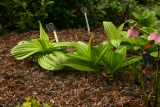

.JPG)

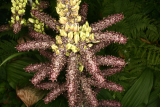
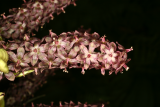
 Slug damage.JPG)
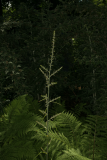

.JPG)


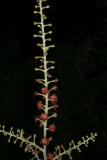
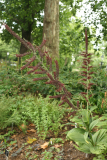
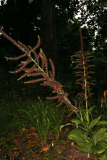
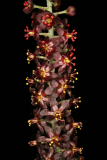
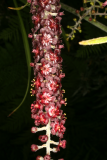
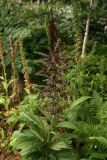

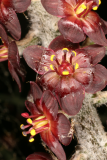
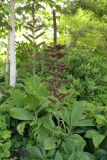
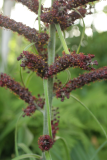

.JPG)
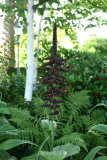
.JPG)
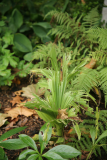
 Slug damage.JPG)
.JPG)